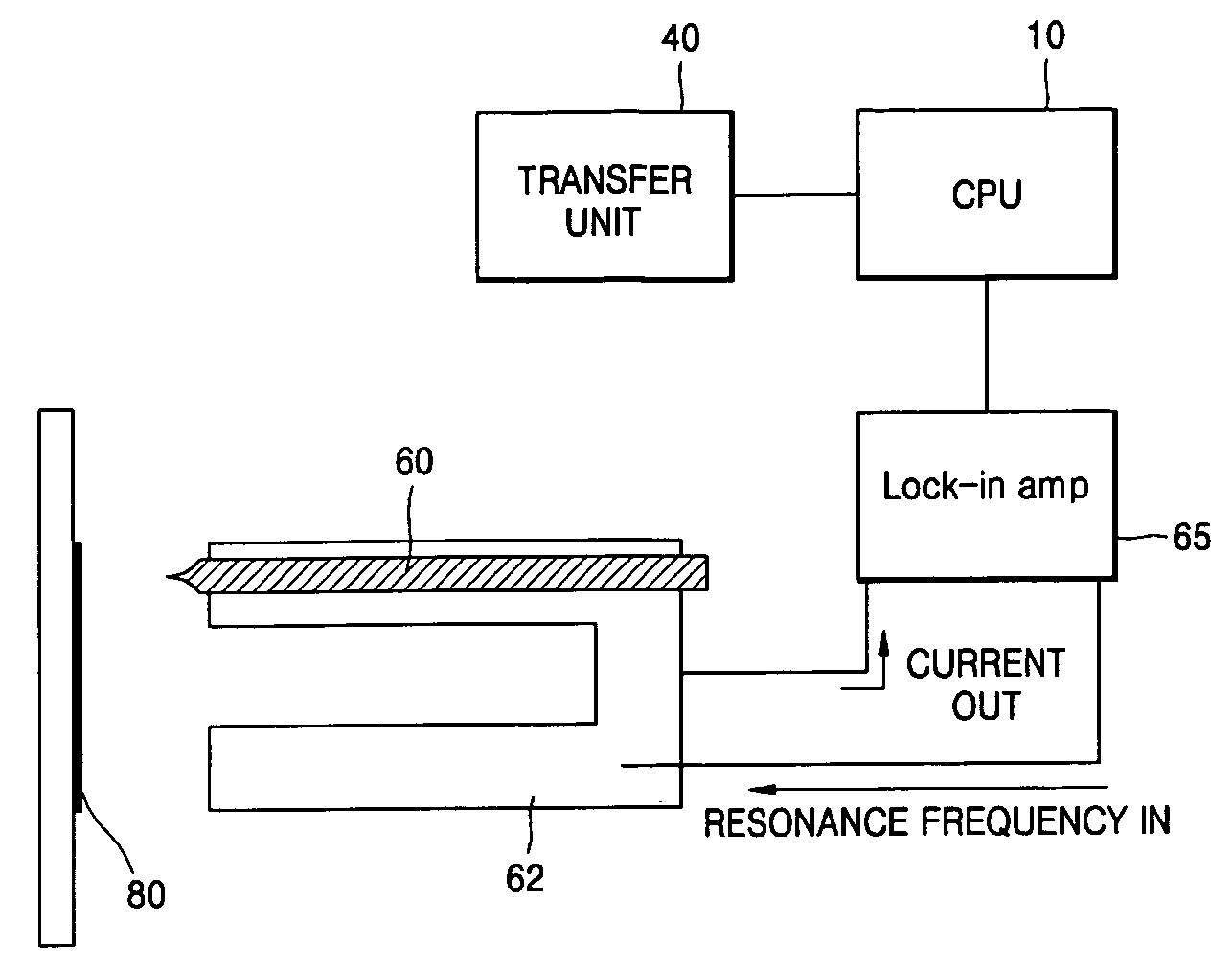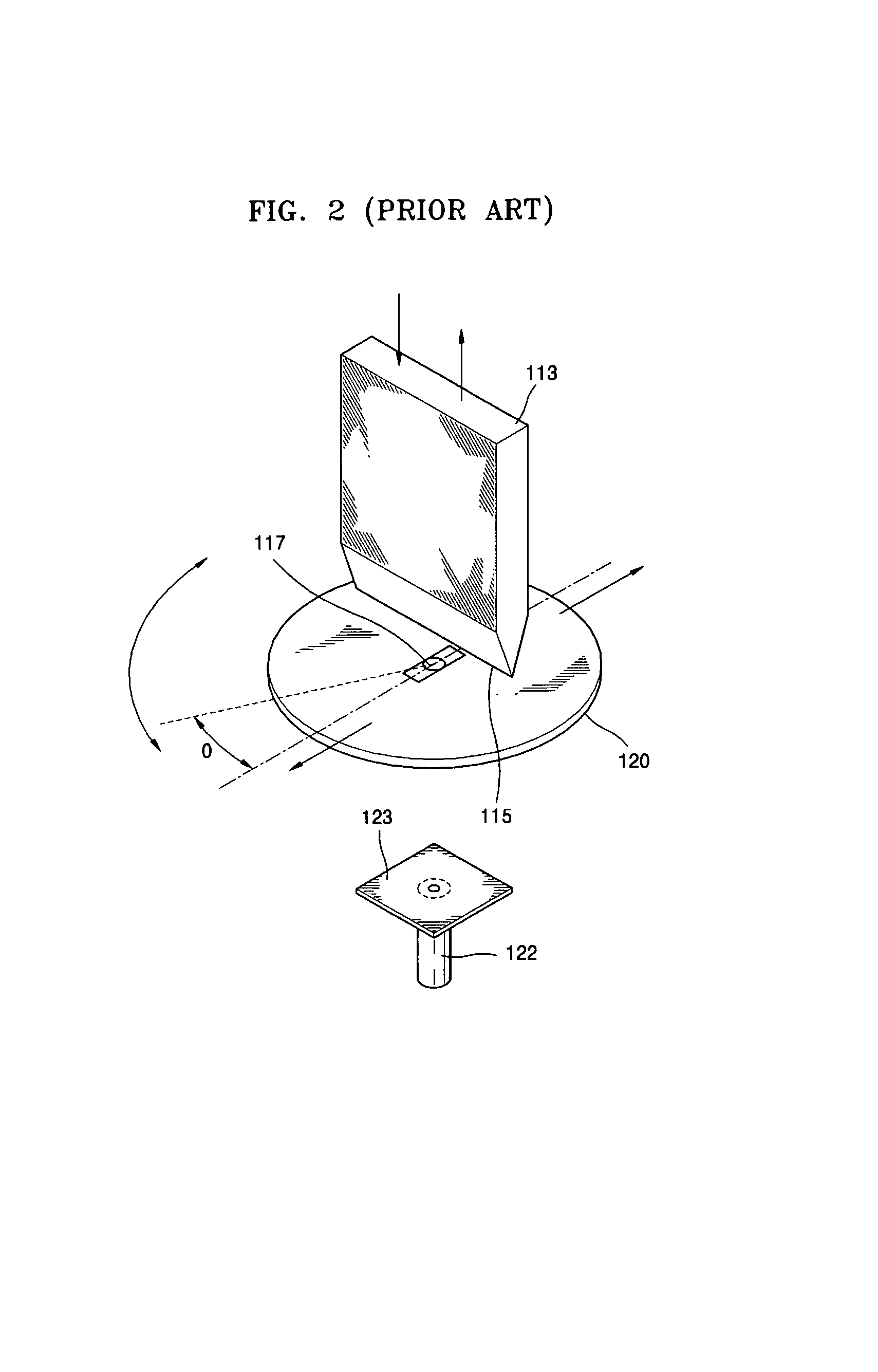Near-field scanning microwave microscope using dielectric resonator
a microwave microscope and dielectric resonator technology, applied in the field of near-field scanning microwave microscopes, can solve the problems of limited resolution of optical microscopes for measuring the shape of nano-sized samples, limit in obtaining maximum sensitivity, etc., to enhance sensitivity, resolution and function, and minimize the bad influences of external environments
- Summary
- Abstract
- Description
- Claims
- Application Information
AI Technical Summary
Benefits of technology
Problems solved by technology
Method used
Image
Examples
Embodiment Construction
[0053]The present invention will now be described more fully with reference to the accompanying drawings, in which exemplary embodiments of the invention are shown.
[0054]FIG. 3 is a schematic block diagram of a near-field microscope using a dielectric resonator according to an embodiment of the present invention.
[0055]Referring to FIG. 3, the inventive near-field microscope includes a central processing unit 10, a wave source 20, a detector 30, a dielectric resonator moving unit 40, a dielectric resonator 50, a probe 60, and an image processing unit 70.
[0056]As aforementioned, the conventional near-field microscope using a coaxial cable resonator has a problem in that searchable samples are limited in type or scope, because it can use only a TEM mode. Also, the conventional near-field microscope using a waveguide slit has a problem in that its resolution is degraded. Accordingly, the inventive near-field microscope uses a dielectric resonator to solve the above problems of the conve...
PUM
 Login to View More
Login to View More Abstract
Description
Claims
Application Information
 Login to View More
Login to View More - R&D
- Intellectual Property
- Life Sciences
- Materials
- Tech Scout
- Unparalleled Data Quality
- Higher Quality Content
- 60% Fewer Hallucinations
Browse by: Latest US Patents, China's latest patents, Technical Efficacy Thesaurus, Application Domain, Technology Topic, Popular Technical Reports.
© 2025 PatSnap. All rights reserved.Legal|Privacy policy|Modern Slavery Act Transparency Statement|Sitemap|About US| Contact US: help@patsnap.com



